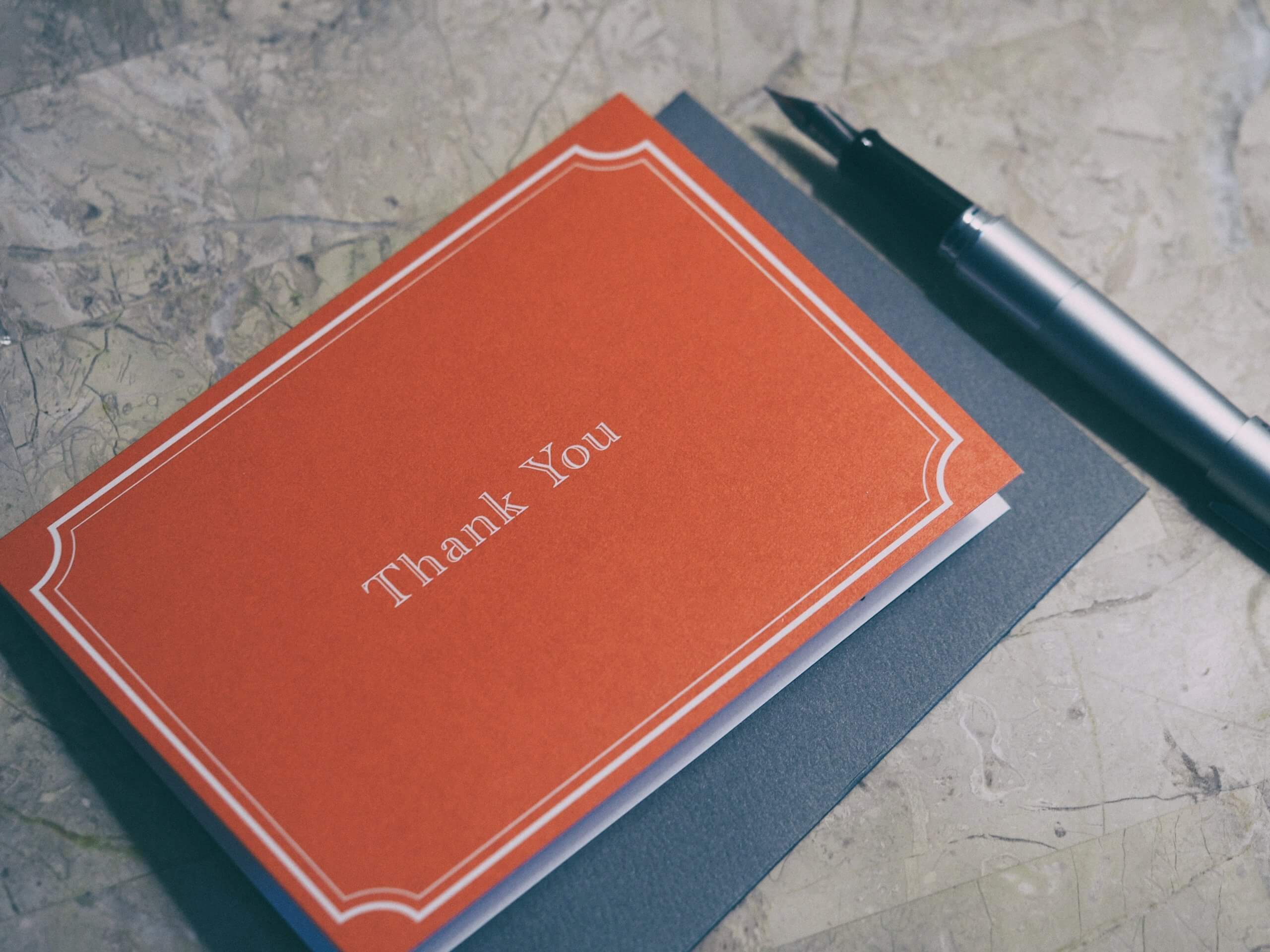Gratitude. It’s such a simple word to say. In reality, it has so much meaning. And it means different things to different people. It can even anchor your business strategy. One thing about gratitude, though, is that it takes practice. The more you practice offering thanks to those you interact with, the happier and better satisfied you (and the recipient) become. That’s good for your business – and you.
Showing gratitude to others is one way you can make them feel appreciated, which is something that offers surprising rewards if you’re willing to initiate. In fact, the art of thanking others can be what sets you apart and builds loyalty among customers, donors, and employees alike. Here’s what you need to know about thanking others, the psychology behind it, and how to maximize its value for your business.
How You Benefit From Gratitude
Gratitude isn’t just about your customers, it can offer big benefits for you. Thanking someone is a small thing that breeds enormous results. The more frequently you practice thanking others, the more thankful you feel about your own life, at least according to Harvard Medical School.
As you take on a grateful mindset, you’ll begin feeling thankful for more and more things. If you have trouble verbalizing gratitude, you might begin by creating a gratitude journal or writing thank-you cards to people in your circle. The more you practice these actions, the easier it will be to offer your thanks to your customers and tell people around you that you are thankful for them.
In business, this isn’t only for customer appreciation. You can show appreciation for employees or even individuals (even vendors) who have given their money, time, and talent to support your business.
Psychology Of A Thank You
Thanking your customers will make a huge difference to your bottom line if you leverage the power of expressing gratitude. in addition to the personal benefits that practicing gratitude and thanking others offer, you’ll enjoy the benefit of more loyal customers.
Why? One big factor is that offering and receiving thanks is actually less common than you’d think. According to a recent study published in Psychological Science, most people underestimate the value of saying thank you – so they don’t do it.
Researchers discovered that when people thank someone, they underestimate the positive sentiments that their statement of appreciation elicits. That might explain why some individuals don’t express their gratitude more frequently.
In several experiments, participants picked someone who positively influenced them and anticipated how the recipient would react to receiving a letter of thanks. The researchers sent letters to the recipients of the thank-you letter and asked them to evaluate the individual thanking them.
According to the survey results, those expressing gratitude significantly underestimated how positively the recipient would rate them. They notably underestimated the competency rating, indicating that looking silly or inept might be a significant barrier to expressing thanks.
What Does Cultivating Gratitude Mean for Businesses?
“Gratitude is the sign of noble souls.” – Aesop.
When you thank your customers, employees, and others you come in contact with, it makes them FEEL good. If you do it consistently, those good feelings become something they associate with you and your business. They will seek out those experiences over interactions with other people because of how your company makes them feel.
In other words, it creates loyalty.
People will often turn down higher-paying jobs if they feel appreciated and valued in their current jobs. The same holds for customers. They will drive out of their way and across town to do business with a shop or store that makes them feel appreciated rather than going to one nearby that does not.
Even with e-commerce businesses, customers will return time and again to websites that make them feel appreciated rather than going to those that make them feel like a nameless, faceless number instead of a valued customer. The way you make people feel matters. Thanking them is a crucial method for making them feel valued and appreciated by you and your business.
Practicing Gratitude in Business
When you make people associated with your business feel appreciated, they will be much more loyal to your business than those who do not. This means expressing gratitude is an incredible way to build loyalty for your business.
Here are a few ideas on how to make your customers feel appreciated:
- Add bonus items or small extras to packages when delivering items.
- Offer free products or samples to customers.
- Start a loyalty program that provides discounted or free items with repeat purchases.
- Provide discounts on future purchases.
- Offer employee appreciation benefits.
- Spotlight customers, employees, etc. in weekly newsletters or social posts.
Another easy way to express gratitude is with a handwritten thank-you card. It may seem like a simple gesture, but it makes an impression on your audience. In fact, a handwritten thank-you note carries far more weight than you may realize because:
- People don’t deliberately say thanks all that often.
- A handwritten thank-you card is more likely to stand out in the mail.
- Handwritten cards are more likely to be read and remembered.
- The fact that someone wrote the information makes gratitude appear more authentic.
- It’s an easy method to show customer appreciation.
Because you practice gratitude, show appreciation, and give thanks, you continue to enjoy the mental health and physical benefits that being grateful provides. Plus, you enjoy the benefits of loyalty from your customers and employees. It’s a real win for businesses and individuals from all walks of life.
Of course, you can thank your customers and employees in many ways. But the most important thing is to actually thank them. More importantly, show them you are grateful for their business and be thankful for things each day as they happen. Do this consistently enough, and over time you will enjoy greater customer loyalty as your business grows.



